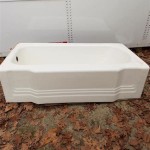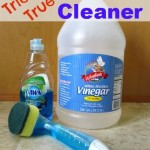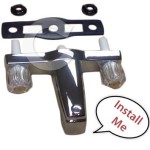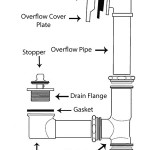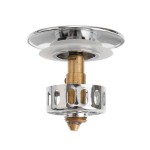Best Bathtub Caulk: Essential Aspects to Consider
Bathtub caulk may seem like an insignificant detail, but it plays a crucial role in protecting your bathroom from leaks, mold, and water damage. To ensure a long-lasting and effective seal, choosing the right caulk is essential. Here are some essential aspects to consider when choosing the best bathtub caulk.
Types of Bathtub Caulk
There are several types of bathtub caulk available, each with its advantages and drawbacks. The following are the most common types:
- Acrylic Latex: Affordable, easy to apply, and suitable for most bathtub installations.
- Silicone: Waterproof, flexible, and mildew-resistant, making it ideal for high-moisture areas.
- Polyurethane: Strong, durable, and UV-resistant, perfect for outdoor bathtubs or areas exposed to sunlight.
Adhesion and Flexibility
Bathtub caulk must adhere well to both the bathtub and the surrounding surfaces. Look for products with high adhesion strength and flexibility to withstand movement and prevent cracking.
Water Resistance and Mold Resistance
The primary purpose of bathtub caulk is to prevent water penetration. Choose a caulk that is waterproof and mildew-resistant to protect against water damage and mold growth.
Durability and Longevity
Quality bathtub caulk should last for several years without needing replacement. Look for products that are resistant to fading, cracking, and peeling.
Ease of Application
Bathtub caulk should be easy to apply, even for beginners. Consider products with self-leveling properties and a smooth, consistent finish.
Additional Features
Some bathtub caulks offer additional features, such as low odor, anti-bacterial protection, or color matching. These features can enhance the installation process or improve the overall aesthetics of your bathroom.
Conclusion
Choosing the best bathtub caulk is crucial for maintaining a clean, waterproof, and safe bathroom. Consider the type of caulk, adhesion and flexibility, water and mold resistance, durability, ease of application, and any additional features that meet your specific needs. By taking these aspects into account, you can select the ideal bathtub caulk that will protect your bathroom for years to come.

The Best Caulk For Showers And Tubs In 2024 Tested By Bob Vila

Which Caulks Are The Best For Showers And Tubs

How To Caulk A Bathtub On Sutton Place
Make Sure To Use The Best Caulk For Showers

Make Sure To Use The Best Caulk For Showers

Choosing The Best Caulk For Bathroom Sink Pep Up Home

Caulk Or Sealant Which Is Right For Your Bathtub Badeloft

15 Genius Tips For Caulking The Bathtub
Make Sure To Use The Best Caulk For Showers

Caulking A Bathtub Simple Steps For Successful Seal

